How to transplant poinsettia after purchase?
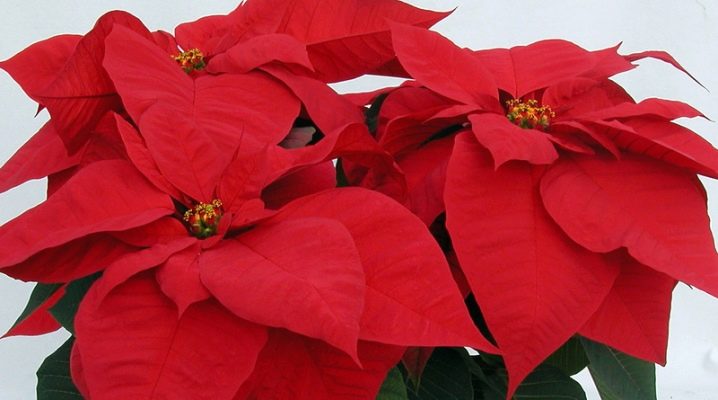
Poinsettia is a decorative indoor bush no higher than 40 cm. Plants with small yellow-green inflorescences surrounded by large bracts have a magnificent appearance, for which poinsettia is the favorite of many flower growers. Growing a flower of incredible beauty is not so difficult, although there are rules common to all varieties. The transplant rules should be strictly observed.
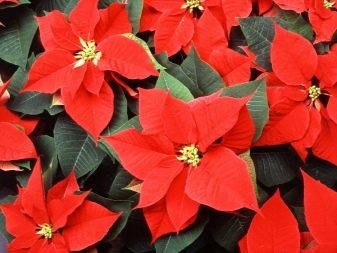
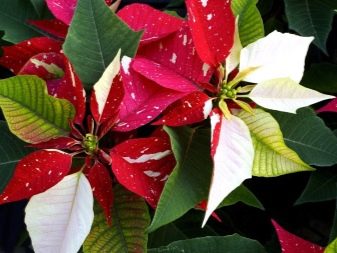
Transplant time
Transplanting is an important procedure in the life of a plant, which largely determines its health. A transplant is required if the flower pot has become small and the roots have taken up the entire space, in the case of a poor substrate, it is also necessary to transplant the plant. It is imperative to transplant the culture after purchase. In this case, it is important to observe the period. So, at home, poinsettia is recommended to be transplanted in the spring of every year. Flowering occurs in winter, and therefore, in winter, transplanting is required only when absolutely necessary.
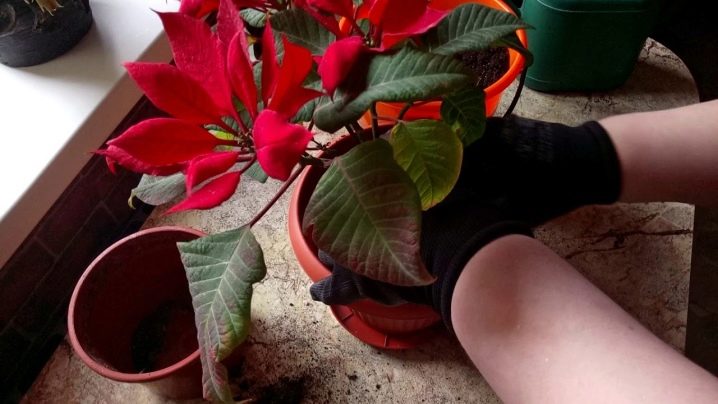
With the beginning of spring, flowering ends, and the bush is dormant for 1.5 months, so this period is the most favorable for transplantation. That is, in mid-March, the procedure is carried out, and within two weeks the flower gets used to the new conditions.
If the plant is just brought from the store, then you cannot immediately transplant it into a new pot. Let the specimen adapt within 3-4 weeks, and only after that it can be transplanted into a new substrate. After buying a flower, you should prepare a special mixture: we combine 4 parts of humus, 2 parts of leaf, 2 parts of sod land and a little sand.
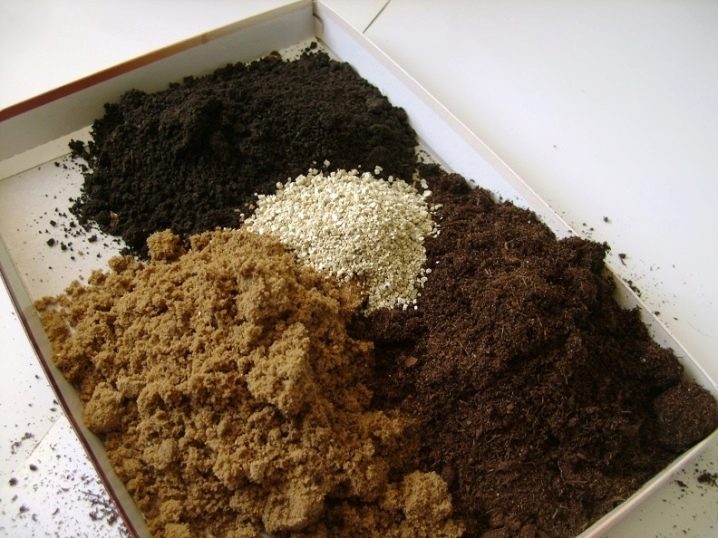
Even before transplanting, a purchased bush should provide comfortable conditions for adaptation. For this, the new pet must be placed on a windowsill and protected from a draft. The most favorable temperature for successful addiction is at least 16 degrees. If a new tenant begins to crumble a couple of weeks after the purchase, it means that he needs new conditions for a dormant period. This phenomenon usually occurs if the flower is purchased in December.
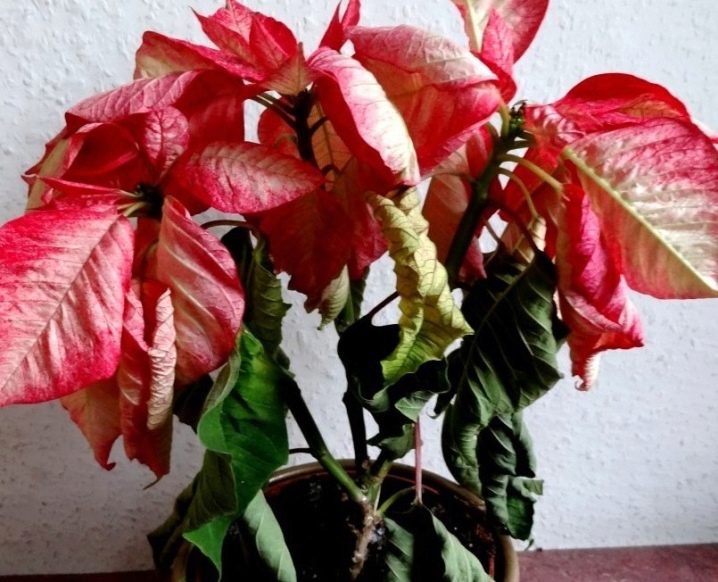
We transplant step by step
When replanting a plant, follow the steps below.
Pick up a new flowerpot with parameters at least a centimeter larger than the previous one.
Place a 3 cm drain on the bottom. You can use gravel, expanded clay or pebbles.
Next, fill in the middle layer of the substrate.
Carefully remove the flower by transferring it from the previous container and place it in the prepared pot along with the earthen lump. Try to avoid trauma to the root system.
Fill in the remaining space with additional soil.
Place a transparent cap on top of the bush. This procedure is designed to provoke high humidity. Do not remove the cap for two months - during this time the roots have time to adapt to the new amount of soil. You need to open this shelter every day so that the earth does not rot.
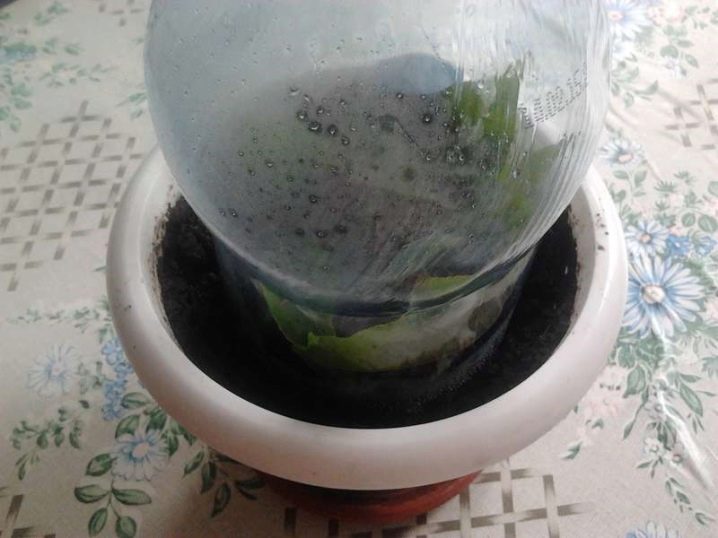
In open ground
For the summer period, many growers prefer to plant a flower in open ground. Until about the beginning of autumn, the poinsettia can be outdoors. Transplanting to a flower bed is carried out as follows:
a plot on the south side is selected;
the soil is fertilized with any mineral mixtures for flowering plants;
by transshipment, the bush is transplanted to the desired place.

Growing crops in the open field in summer has its own characteristics. For example, fertilizing is applied twice a month, and watering is carried out only in moist soil, otherwise the roots may get burned. At the same time, it is important not to overflow the culture.
The plant transplanted to the site also needs to be covered with a transparent cap. In addition, gardeners recommend using a slow-release fertilizer when growing, so maintenance will be much easier.
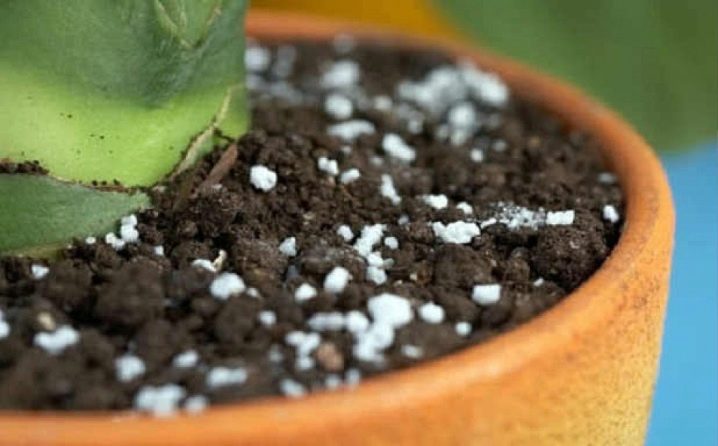
Care
After transplanting, it often happens that the bush does not take root in a new place. Perhaps the reason lies in trauma to the root system during the transplantation process or in the formation of putrefactive processes. In these cases, the “moving” procedure needs to be repeated, and before that the roots should be lowered into “Kornevin”, this composition will ensure the correct development of the root system. If the flower failed to revive, then you can try to grow a new shoot from the cuttings.
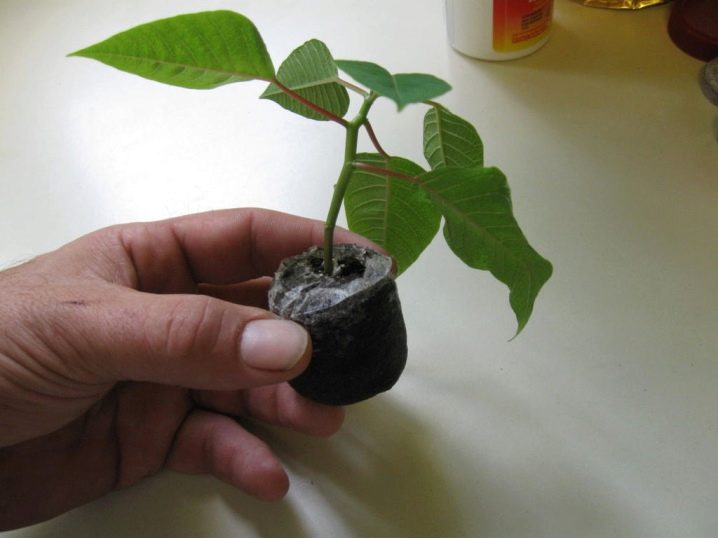
Another reason for poor adaptation of the culture to new conditions may be non-compliance with the rules of care. Experienced flower growers give advice on how to properly care for poinsettia.
Pay special attention to lighting. Under the influence of direct ultraviolet rays, burns can form on the leaves, the brightness of the flowers is lost, sometimes after such exposure, the previous colorful color is not restored. Therefore, it is recommended to place a container with a plant on the east or west side. It is important that the light is diffused, so it will not be superfluous to stock up on additional devices. Also, a special phytolamp will be able to help out the florist.
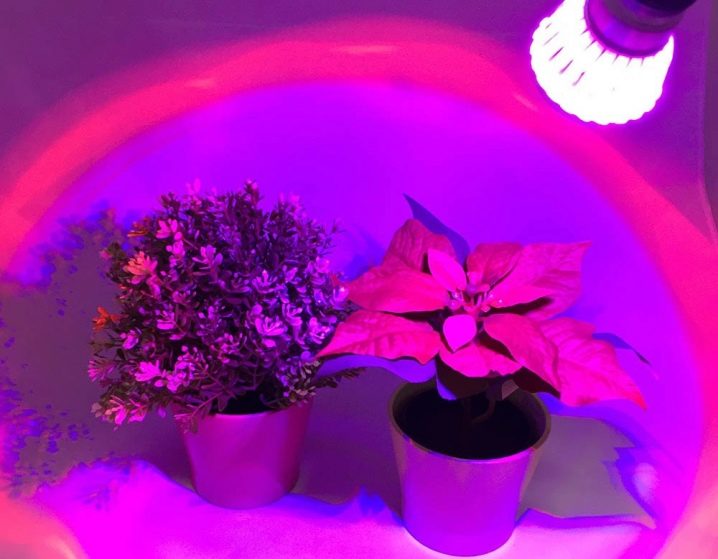
It is important to monitor the humidity of the air. For good development, this indicator should be observed within 60-70%. Daily spraying of the aboveground part will help to ensure a favorable level of humidity. Another option is to place a container of water near the pot: a decorative fountain or a household air humidifier.

Another rule is to avoid sudden changes in temperature. The constant temperature should be limited to 16-27 degrees above zero. The most comfortable temperature range is 20-24 degrees.
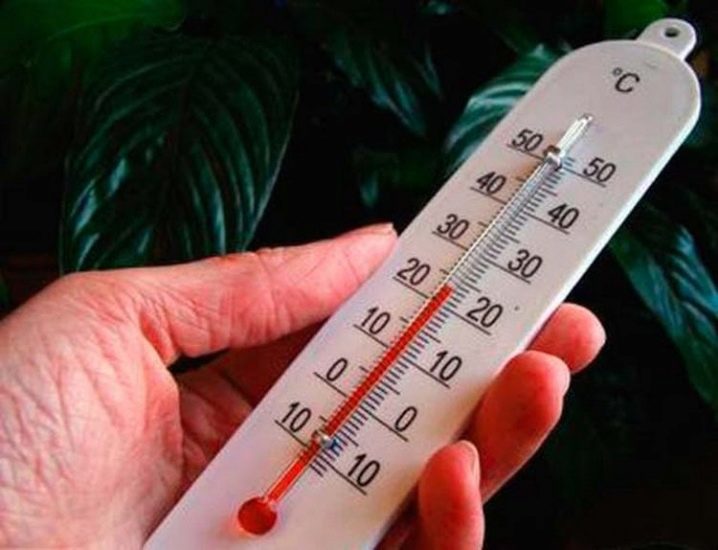
An important period in the life of a plant is flowering. During this state, it is not recommended to replant the poinsettia, you must wait until the specimen has faded. The favorable temperature during the rest period is from 12 to 14 degrees.
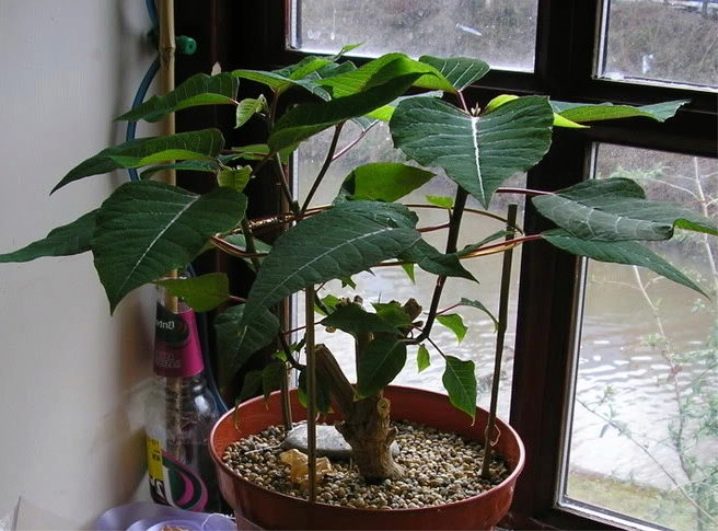
Be sure to follow the rules of watering. In summer, the procedure should be carried out often, the amount of water is abundant. It is important not to dry the ground. In winter, watering the plant is enough once every 3-4 weeks. At the same time, the water must be clean and settled, its temperature is 30 degrees. Heating water in a microwave oven or on a stove is allowed.
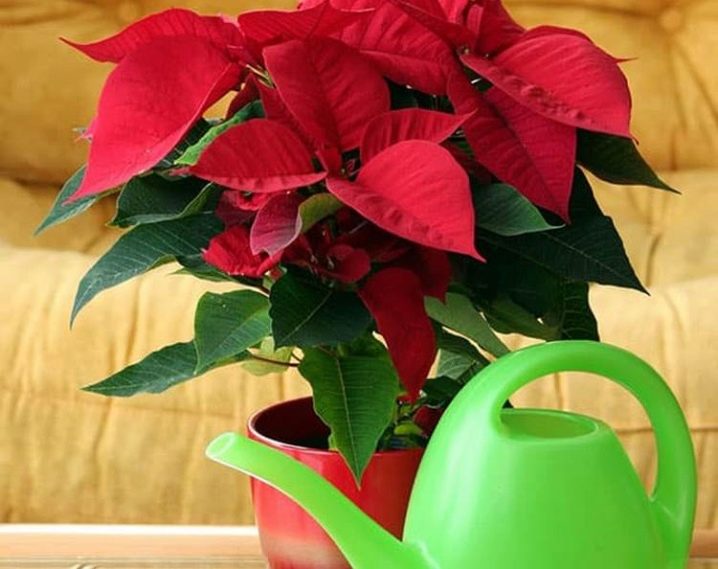
The flower cannot be fertilized immediately after transplanting. The rest of the time, the plant needs feeding. After flowering, fertilizer is applied a maximum of once a month. In spring and autumn, mineral complexes are suitable for this, in summer it is recommended to use a weak mullein solution, and in winter you can use a potassium mixture for ornamental houseplants.
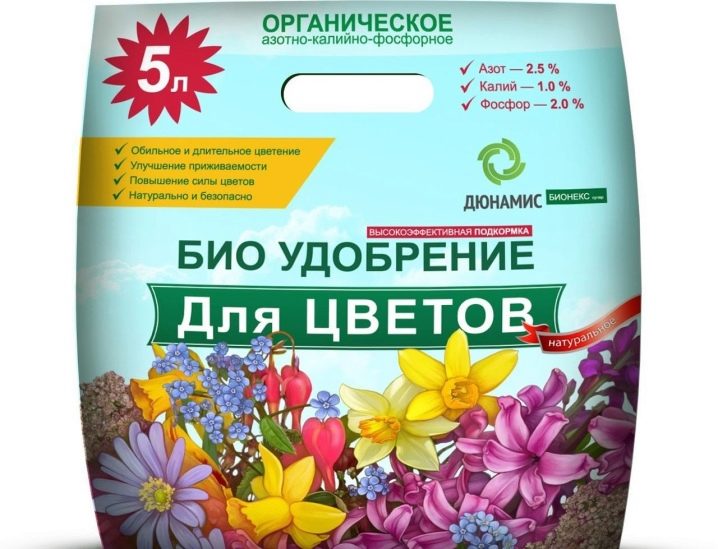
Flower pruning is done immediately after the flowering period. The growth of poinsettia is quite intense, and therefore it needs pruning in March-April. At the same time, the stems are eliminated, only decimeter green rods remain in the pot. The pruning procedure ends with watering and abundant spraying. After 1-1.5 months, new shoots begin to hatch, of which no more than 6 of the strongest should be left, and the rest should be removed again. By the way, cut shoots can be rooted in the ground, thereby multiplying the flower.
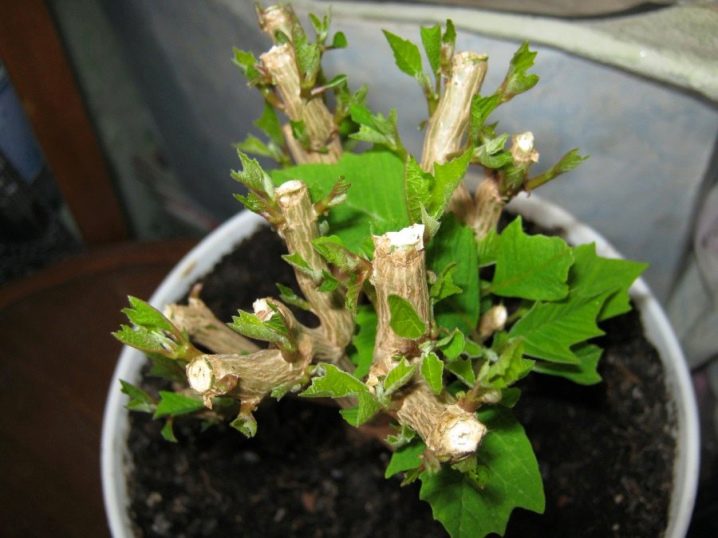
Recommendations
Experienced gardeners give some more tips on how to grow a beautiful healthy flower at home.
Choose viable specimens in the store initially. There should be no packaging on such a plant, the potting substrate should be moderately moist, the stems should have an even color without spots and streaks, the leaves should grow on all sides of the stems, have a bright green color without signs of wilting. The flowers of a healthy plant are wrapped in green-yellow buds, and the bracts are clean and not pollinated.
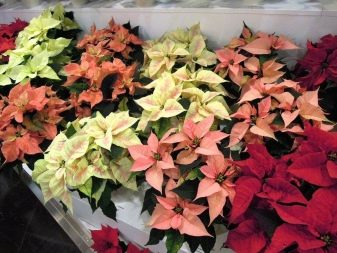

It is important to minimize the harmful effects of transporting the plant from the store to the home. To do this, the flower must be wrapped in thick wrapping paper in several layers, without pressing the bracts, and wrapped with a cloth on top. Can be simply packed in a box. The less time the plant spends in the cold, the faster it gets used to new conditions. At home, you need to unpack it immediately.
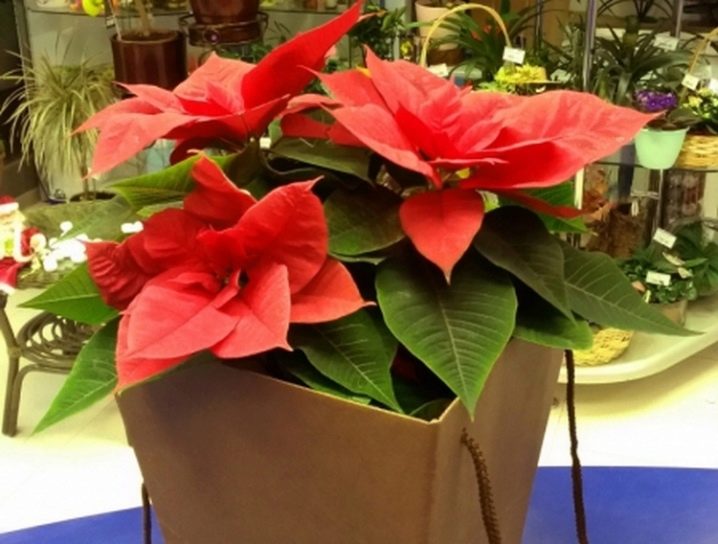
Don't forget poinsettia is a poisonous culture, and therefore, it is imperative to carry out transplants and other manipulations with rubber gloves.
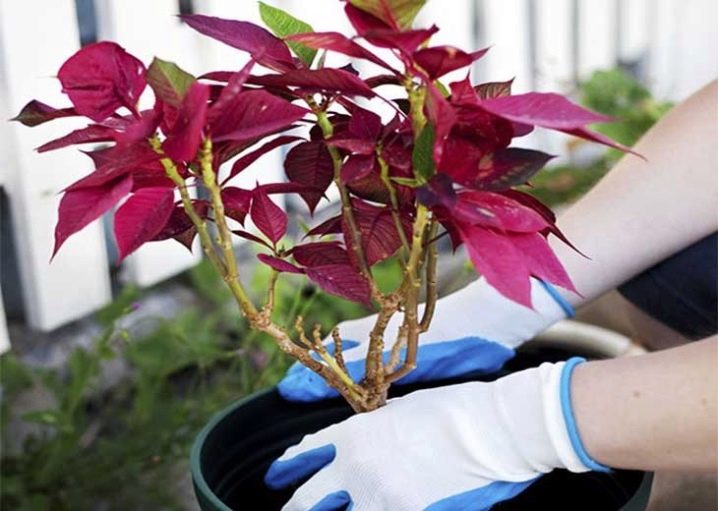
It is also important to protect children and animals from the dangerous flower as much as possible.
For information on how and when to correctly transplant a poinsettia, see the next video.

















































The comment was sent successfully.